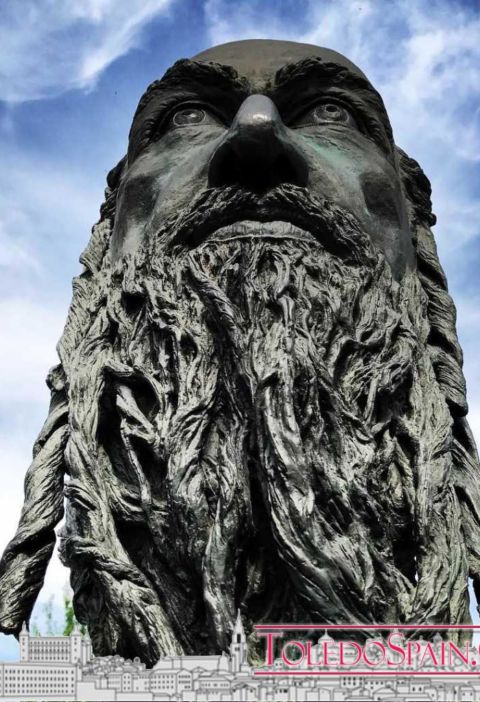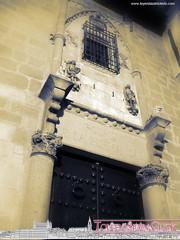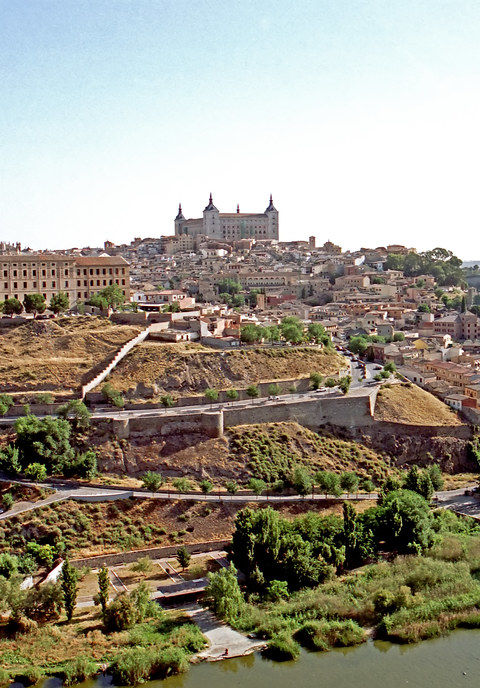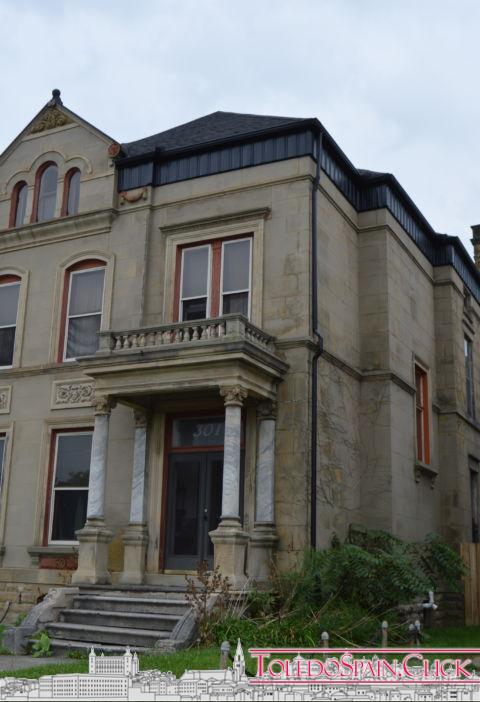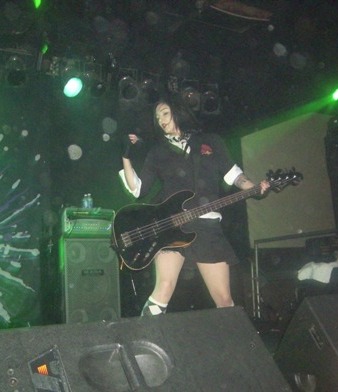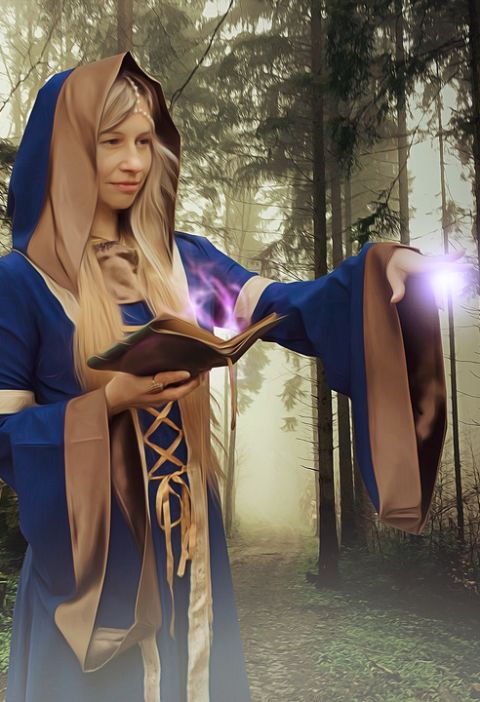 José Ignacio Carmona, prolific researcher, sends us an interesting text that delves into the mystery of the “Table of Solomon”, and intrepidly associates the well-known “Santa María de Melque” with this object considered by many to be “magical” and real.
José Ignacio Carmona, prolific researcher, sends us an interesting text that delves into the mystery of the “Table of Solomon”, and intrepidly associates the well-known “Santa María de Melque” with this object considered by many to be “magical” and real.
For a long time I want to give shape to an article and perhaps when the time comes I do not see how to include it in a website dedicated almost monothematically to psychophonies, however, the fact of alluding again and again to SANTA MARIA DE MELQUE, as almost exclusive place of my psychophonic recordings, leaves the doors open to me as well as many of the contents of the messages.
I would like for a moment to stop in the enigmatic etymology of the name: “Melque”, the uncertainties of its origin has elucidating more or less approximate theories of historical, geographical, semantic nature, etc., perhaps the most consensual is that there passed the royal glen and in Arabic Balat-al-muk would indicate “the way of the king”.
Let’s suppose for a moment that we could also connect in his uncertain etymology with the Phoenician God Bal-Melkart or with one of the most enigmatic characters of the Old Testament: “Melchizedek”. Not to mention his disappeared black virgin, HOLY MARY OF MELQUE, of milk? Did the same milk that the legend made fall on the initiatory lips of Saint Bernard of Clairvaux, father of the Templar militia?
It is no coincidence that we are in the 3rd Baília of the Templar Castle of Montalbán, whose orochrome name “albi” = white is unequivocally Celtic, as well as the archaeological findings of a certain zoomorphic bulge, a statuette with Celtic characteristics and reminiscent of pagan cults known as “the Lady of the Mountains of Toledo” and of funerary tombstones dedicated to LICINIA, of the people of the MAGANOS.
The same meaning of magic-religious indole that the different towns that inhabited the region wanted to find in it, we find it in the nearby place of Sotorredondo, with the appearance of a Roman statuette of the god Mercury.
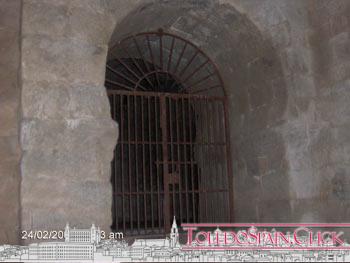 In synthesis, we are before an enclave of first order, where each civilization was confirming the sacred nature of the same limiting itself only to transmute the different deities by their own.
In synthesis, we are before an enclave of first order, where each civilization was confirming the sacred nature of the same limiting itself only to transmute the different deities by their own.
Now let us deal with the actors who may well make sense of this story I want to tell you about, Mozarabic Monks, Templars and Jews. As I have already mentioned we are before one of the most important encomiendas (castle and hermitage) of the order, the famous castle has been speculated with its location, away from any route and without any function to lord or defend an area, reaching the conclusion that it was intended to carry out the ordination of priests of the Order itself, other more heterodox visions point to an inciatic forum where rites were performed reserved for an elite among the knights. In fact, practically to the present day it has remained the annual meeting point (Good Friday night) of certain neo-Templar organizations that claim to be heirs of the Order.
As for the hermitage of Melque, some authors see in its anachronistic tower not a defensive purpose, but the perpetuation of certain precise cults of sun worship, and certainly from the dome to little observed, pass beams of light that compartmentalize the church in subtle rooms, which would suggest a path of initiatory cut, likewise, in his stucco we find the tree of life, beginning and end emanating divine light in the manner of the “sefhirot” of the Kabbalah, and if we stick to its architectural configuration we find a synthesis of styles that has confused scholars with its historical date. Wasn’t one of the objectives of temple the universalization of all religions under the same God?
It is not by chance that we find the region of Montalbán (La Puebla) with an important presence of Hebrew communities, but one of the things that I want to emphasize and that in my opinion has an enlightening relevance, is that the Jewish community of Toledo does not have any origin whatsoever, but belongs to none other than the tribe of Benachamín and Judá, the priestly elite who guard the immemorial legacy (2nd cycle of conferences of the consulate general of Spain in Jerusalem with the collaboration of the Spanish Biblical and Archaeological Institute)
.
I’m sure you’re also interested in: Templars in Toledo
Saúl Ibn Dánan (C.del Valle and G. Stemberger 1997:25. See Appendix 1: “Hebrew notes” ):
” When the destruction of the 2nd temple took place, a Cesár ruled over the world in Rome. Then he took out of Jersusalen and other cities 40,000 families from the lineage of Judah 10,000 from that of Benjamin and that of the priests, and sent them to Spain”
Wise Thomas:
” All the Jews existing today in the kingdom are of royal lineage and descendants in part of the lineage of Judah. How can one not marvel at a family that prides itself on descending from King David?
(zzz_1)It does not therefore seem a nonsense that the atavistic custodians of Solomon’s table and other liturgical objects of the same treasure went beyond where this well documented could end the same, to the Visigothic court, Toledo, the Hebrew “Tôldot” generations).
When the multisuman invasion took place, the legend about the future of the table ensued, to which magical properties were conferred and which was ultimately important in the liturgical character of the pronunciation by the Hebrew High Priest of the “sema-semaforhas”, the formula and intonation of the divine name on which the world is sustained and all celestial hierarchies are ordered.
Faced with the imminent fall of Toledo, everything points to the fact that the Visigoth treasure, which we should not forget was formed by the real treasure, purely material, and the authentic treasure, which were the objects that made up the identity of an eminently nomadic people, had to be put in safekeeping, it has reached this point where, due to all the antecedents I have exposed, my hypothesis makes sense with the dispersed data we have on the fate of the table.
The legend speaks of certain monks who took her two leagues in the direction of the mountains of Toledo next to the castle of Faras, certain authors have wanted to see in this poor description the current desolate place of Malamoneda near Hontanar, but in my opinion there are certain indications more than reasonable that make suppose Melque as the last destination of the table.
The strange figure of Father Sauniere, the famous priest of Rennes-le-Chateaû, comes to mind. After having found something behind a column of his church dedicated to the Magadalena, he had to find something that was the beginning of his fortune and that put him in the way of another, even bigger company, over which so many shadows and lights have been cast.
What did the father find behind a column, let’s not forget, Visigoth? It is said that files on a possible lineage davínica, but what if this demonstrated is that the Church is in the line that goes from Carcassone to Toledo, where the Visigoths had to move the capital. Once again were “lost” secrets along the way in hit and run?
Well, we find this decisive character in the scene of what could have been the search for Solomon’s table, that is, around the cathedral of Jaen where certain hypotheses comment that the Table could have been lost on the way to the East, and would have reached our beginning of the century guarded by a hermetic brotherhood, and what interests us, in the surroundings of the mountains of Toledo (read Ajofrín) where historians such as Mercedes Izquierdo point to a parallelism that is not accidental between Jews, Visigoths and Templars.
Why not refer to a not at all random fact, such as the fact that the Templars, by means of mechanisms that we do not know, knew how to strategically locate their enclaves following imaginary lines and astrological coordinates, so Melque is the arrowhead end of a trajectory drawn along the Templar enclaves on the margins of the Tagus.
Those of us who know the interior of Melque well know of the existence of an ARCOSOLE of which we do not know more data, even in prospecting and archaeology work and more recent rehabilitation nobody provides information that is not speculative about who this mortuary habitat was intended for, a fact that baffles me, Inasmuch as other hermitages contemporary to Melque scattered throughout the Spanish geography did reserve that privileged place for a relevant character, and thus, saints were buried before whom the common people came to venerate their remains or illustrious characters of the nobility. What sense does it make on the shores of the court itself to reserve a space where no one would be buried?, especially if it is the prevalent place of the church itself in whose exterior a multitude of anthropomorphic tombs are embraced.
I’m sure you’re also interested: The Baptism of Blood. Legend of the Templars in Toledo
 On the other hand, it should be noted that in the direction of the mountains of Toledo, the remains of the well-known “treasure of Guarrazar” (Guadamur), jewellery, household goods, votive crowns, etc., which the Visigoths were able to hide in a hasty flight, forming part of the so-called “royal treasure”, were found buried. Would it not be unreasonable, then, if, in the same direction, only a few kilometres away, the place destined or improvised to guard the authentic treasure could be?
On the other hand, it should be noted that in the direction of the mountains of Toledo, the remains of the well-known “treasure of Guarrazar” (Guadamur), jewellery, household goods, votive crowns, etc., which the Visigoths were able to hide in a hasty flight, forming part of the so-called “royal treasure”, were found buried. Would it not be unreasonable, then, if, in the same direction, only a few kilometres away, the place destined or improvised to guard the authentic treasure could be?
It is not by chance that the Temple has always been spoken of as the custodians of the table, but it is in the stables of the temple in Jerusalem that they have their origin, so how can we not make reference to the enigmatic location of the temple encomiendas and the hermetic character that surrounded everything that happened inside the Bailiwick of Montalbán, in whose castle we find marks of canteria next to stars of David and whose timeless custodians of the most sacrosanct lineage of the Jewish people settled in the same region, not to mention the documented protection and mutual support that was established between the Jews and Templars.
On the other hand, I invite you to look for MELQUISEDEC in the Old Testament, you will not find a character more wrapped in mists that is not by chance sculpted in the cathedral of Toledo, a kind of intermediary between the divinity and Abraham, Melque = Melquisedec?
And as not to mention the black virgin of Melque, paradigm of the alchemical work, because something else could not be found in the heiress of the cult of the Mother Goddess rooted with the Egyptian Isis, to whose “milk” the neophytes go, remembering that close to us we have the god Mercury, mines of lead and silver, and the “gens” of MAGANS or ALBOS that come to be those who are born to another life from the allegorical negritude of their dead nature. Why not find in the interior of Melchus the table which, far from being a table, is an imperishable sacred centre, the ultimate synthesis of all the predecessor and future religions?
In addition, the mystical experience attributed to BERNARDO DE CALARAVAUX, allegorically freeing from the virgin herself the revelation of a whole quasi-divine task that was embodied in the support and relaunching of the order through the Council of Troyes, leaves many unknowns about the fact that it is not a coincidence that it is the Virgin of Melque who carries the same mystical-chemical substance (” milk” ) that inspired such an enterprise.
Because let us not forget that the famous snakes of Celtic telluric energy that traveled the earth vivifying it, converged in places of Melque’s nature, where the ancient man intimately linked to the forces of the intangible found the substratum to reach altered states of consciousness that united him with the divinity, let us not forget that “Melkart” was represented as a venerated bull, and that Melque could well be the metaphor of the labyrinth that faces us with our own limitations.
To finish I do not want to steal that the legend always located the famous Templar treasure in MONTALBÁN, which mentions subterranean linking the hermitage and the castle equidistant a few kilometers, with stories of shepherds who lose sheep and appear on either side as the case may be, and that the dream of the just, jealous of their secret, Melchus was buried under the earth and when it was discovered it was only accessible as in the beginning of time, descending as can be no other way to the bowels of oneself, penetrating the uterus of the world where unequivocally the voices of those who still keep their secret from another world still reconcile the profane to turn over their steps.
Text and photos: JOSE IGNACIO CARMONA SANCHEZ (IÑAKI)
6 NOVEMBER 2006
HTTP://WWW.PSICOFONIASDIALOGOS.WEBPARTICULAR.COM
Find out more:
– Article on Solomon’s Table.
– Information about “Santa María de Melque”
Pictures:
– “Guasabi” – space on Flickr.
– “Martius” – space on Flickr.
var td_screen_width = window.innerWidth;
if ( td_screen_width>= 1140 ) {
/* large monitors */
document.write(”);
(adsbygoogle = window.adsbygoogle || []).push({});
}
if ( td_screen_width>= 1019 && td_screen_width = 768 && td_screen_width

